Starting a link-building campaign with a plan is a good idea.
You don’t want to end up frustrated, wondering why nothing works, right?
A link-building plan is a clear strategy for getting other websites to link back to yours.
This helps you rank better on Google by building up links from trusted sites.
Without a plan, you’re just hoping for the best—and that rarely works.
Read on to find out how you start.
TL;DR
First, figure out which pages on your site need some love.
Think how-to guides, deep-dive articles, or anything that gives valuable insights. These are the pages worth your attention.
Before you even think about getting links, make sure your site isn’t a hot mess.
If it’s slow or hard to use, people won’t stick around long enough to care about your amazing content.
Next, get sneaky and check out what your competitors are doing.
Where are they getting links from?
No need to reinvent the wheel—just aim for similar sources.
Just don’t go after every link you see. Quality > quantity, every time.
Now, you need an off-page SEO strategy.
Guest postiing?
Digital PR?
Content marketing?
Pick what works best for you.
BTW, according to our recent survey of 518 SEO experts, 48.6% of them swear by digital PR—it’s a fan favorite for a reason.
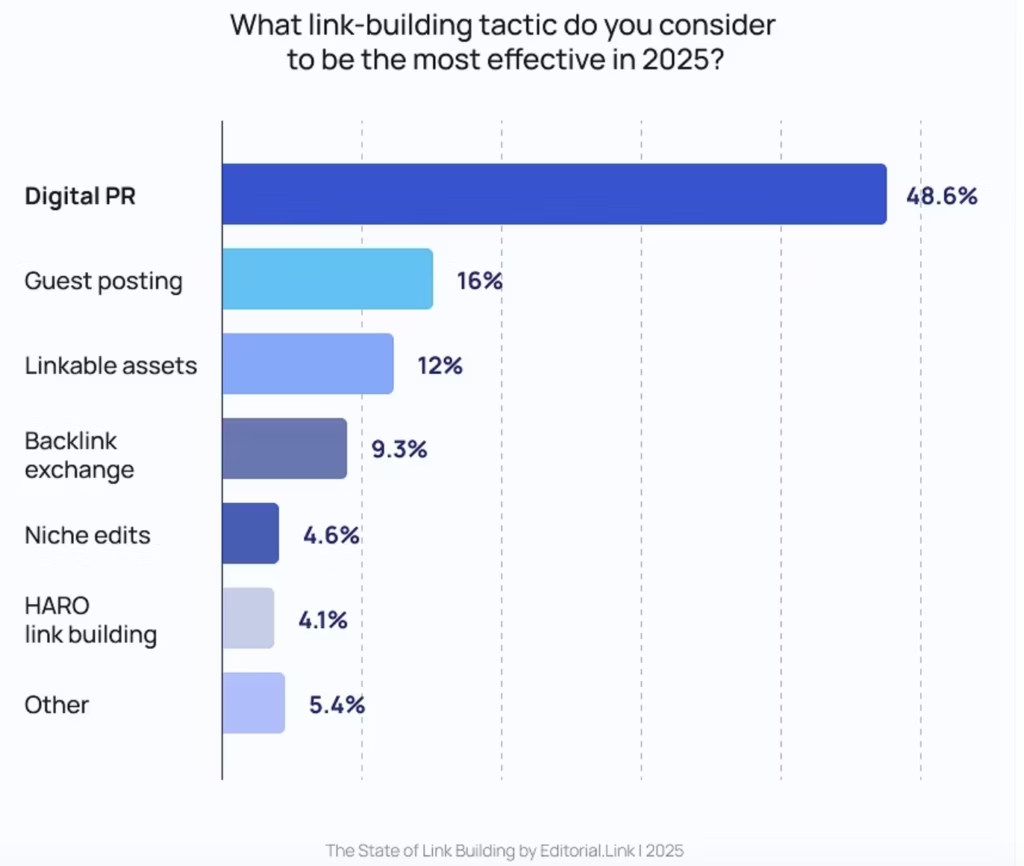
You’ve got to have content people want to link to.
I’m talking original research, detailed statistical reports, cool infographics, or videos that make people go, “Wow, I need to share this!” This is how you earn quality backlinks.
And don’t forget the money part.
Your link-building plan depends a lot on how much you're willing to invest.
We’ve put together an infographic with budget options for different industries, based on how complex the link-building process can be.
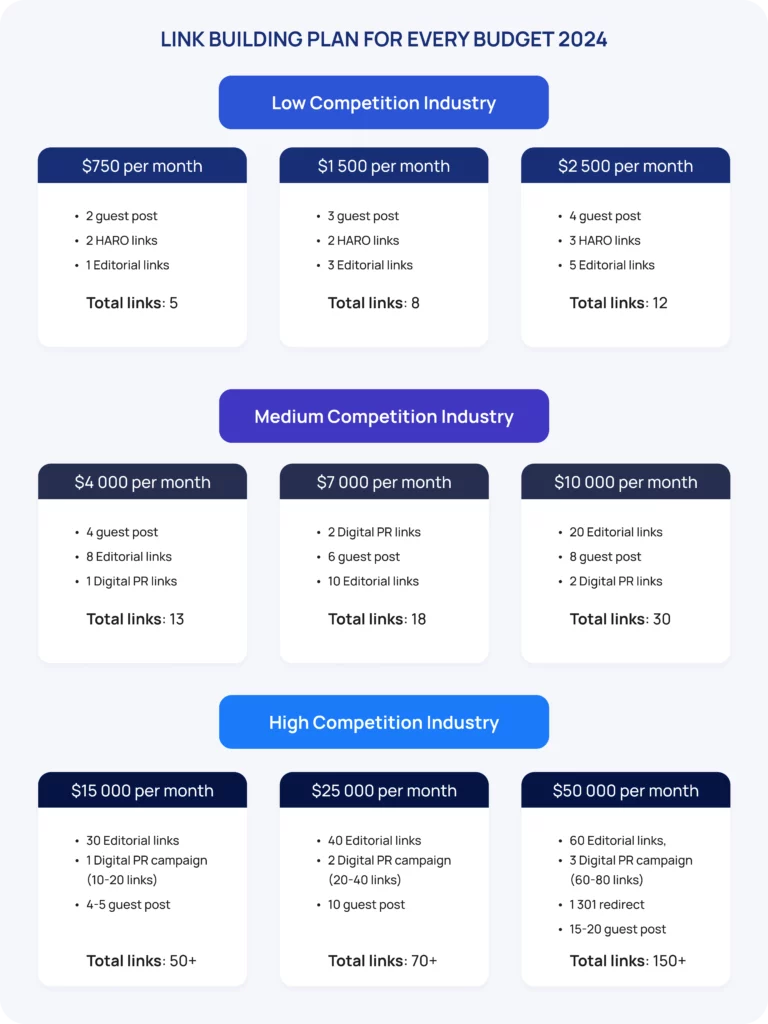
Yup.
Quality backlinks aren’t free — on average, a top-tier link runs about $508.95.
Finally, keep tabs on how things are going.
Track stuff like dofollow/nofollow ratio, domain/link quality, relevance, anchor text, and how those links are helping you out.
No point in all this effort if you’re not seeing results, right?
Why You Need a Backlink Plan?
Have you heard of the “spray and pray” method?
It’s when you throw a bunch of strategies at the wall and hope something sticks.
Spoiler alert: It doesn’t work.
If you want predictable results, you need a clear plan.
Without it, you’re just guessing.
Link building is like launching a product or running ads.
You need a goal from the start. Once you have it, you can map out the steps to reach it.
As you roll out your link-building tactics, your plan will be your guide. It’ll help you track progress, pinpoint what’s working, and tweak what’s not.
All in all, a smart link-building plan keeps you focused and on the right track.
How to Create a Link-Building Plan that Works?
Your plan is the backbone of all your link-building efforts, so let’s take it seriously. Below are the steps to follow.
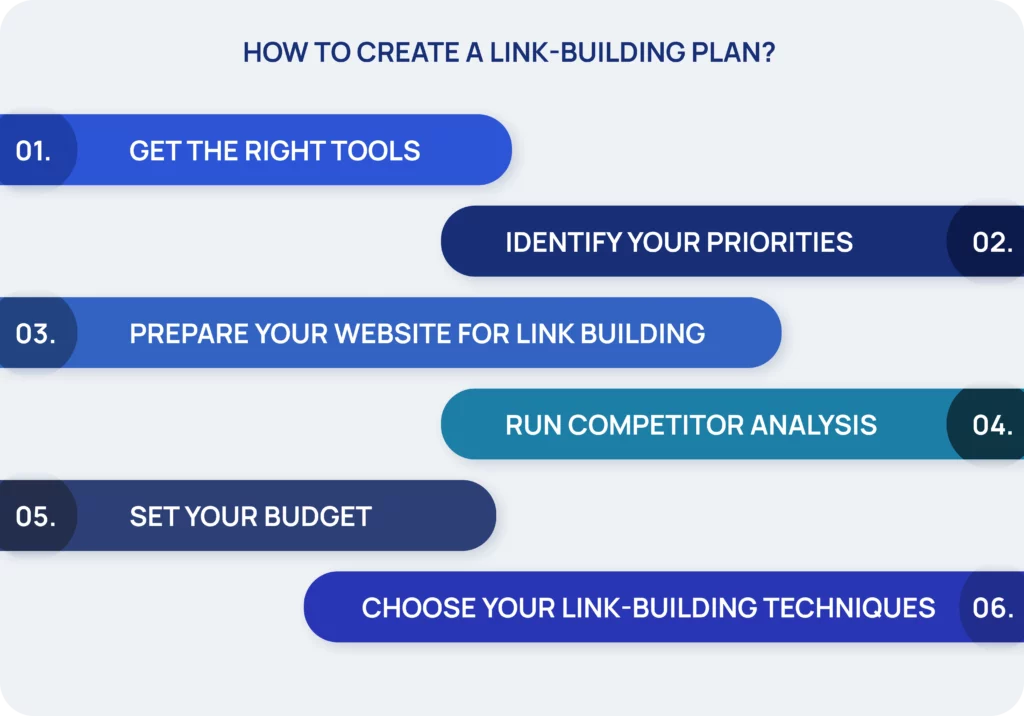
Step 1: Get the right tools
Your investment in link-building starts with having the right tools in your arsenal.
You need a reliable backlink analysis tool to perform initial research, spot link-building opportunities, and track your results.
Tools like Ahrefs or Semrush are great options.
According to our survey, Ahrefs is a top choice for SEO experts, with 59.1% voting it as the best all-in-one SEO tool, and 68,1% agreeing that it provides the most comprehensive backlink data.
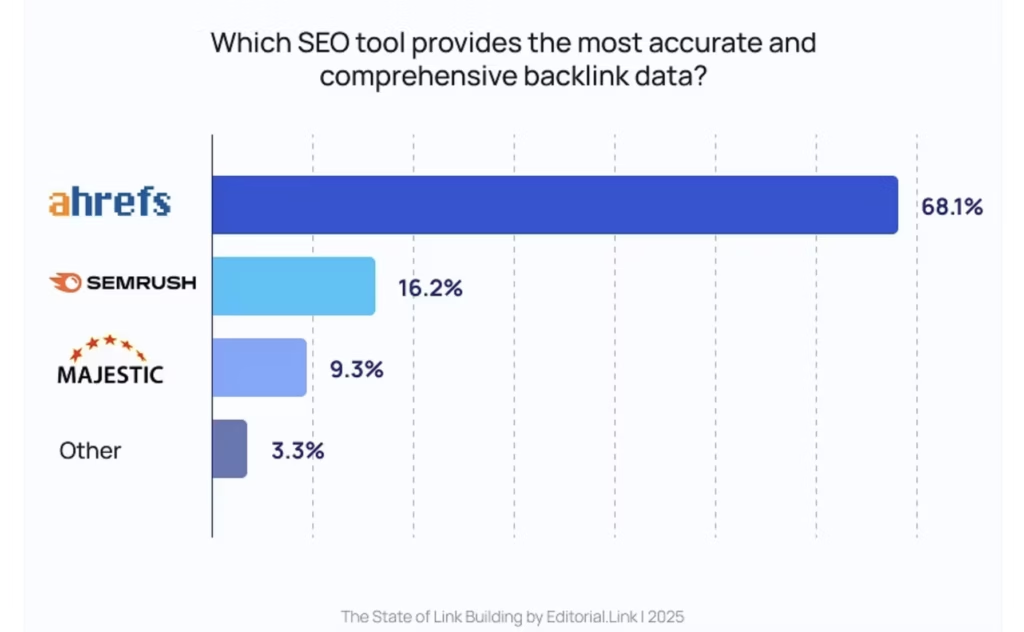
We’ve been using Ahrefs for years, and it’s been a game-changer.
But any tool that fits your needs will do the trick.
Also, over 44% of SEO experts are leveraging AI tools to streamline their link-building efforts.
While manual link building is the GOAT, if used wisely, proper tools can also help you stay ahead.
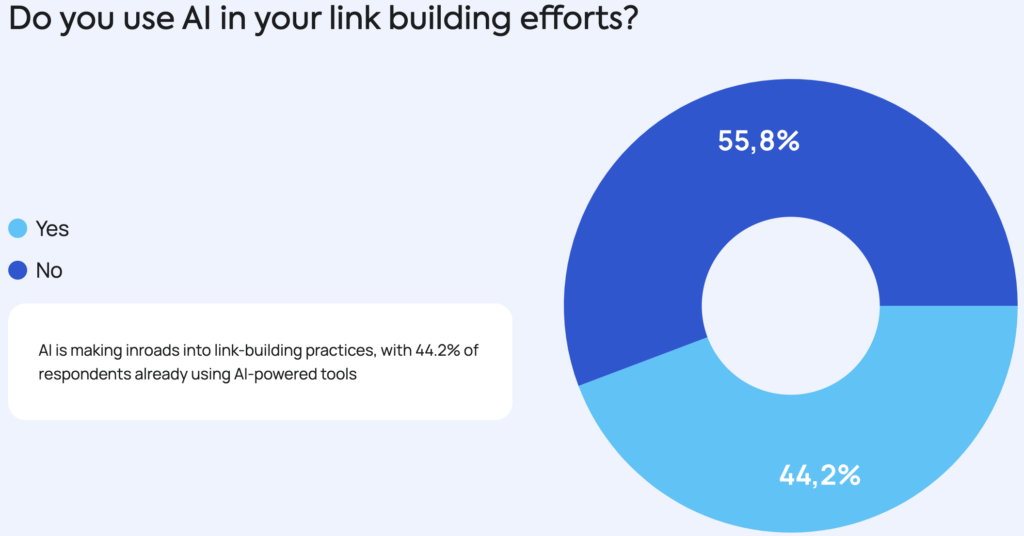
💡 Tip: Choose your link building software wisely, as it can impact the costs of your project as you scale up your SEO game. Make sure your plans remain cost-effective as you grow.
Step 2: Identify your priorities
By now, you probably have a good idea of your SEO target pages.
These are typically high-intent pages, like commercial ones, where conversions happen.
Your starting point should align with your campaign goals and whether you’re building from scratch or already have some traffic and domain authority.
While it might be tempting to start with “money pages” (like product or service landing pages), it’s not always the right choice.
As Mickey Aharony, Fractional Content Strategist, points out, focusing on informational content first can be more beneficial, especially if your site is new or still establishing its authority.
The decision about which page to begin with ultimately hinges on your objectives (goals and strategies of your SEO campaign), as well as whether you are building from the ground up or already possess traffic and domain authority.
It can be tempting to begin with “money pages,” i.e., transactional pages where conversions are desired, such as product pages or service landing pages. This ensures that any links built are closely tied to your direct conversion goals, thus aiding your business’s growth effectively.
For SaaS companies, product pages rarely top the search results.
Contextual pages or those showcasing your product in action tend to perform better.
It’s critical to acknowledge that “money pages” are not always the right starting point for every business. If your website is new or if your brand is still establishing its authority and trust in the online market, focusing initially on informational content can be beneficial. This contextually rich, valuable, and user-centric content can earn better link profiles and provide users with valuable answers to their queries. Building links for blogs, how-to guides, or useful resources can still increase your site’s visibility and audience reach.”
Note: In my experience with SaaS, product pages seldom rank at the top. Pages that provide context or showcase your product in action tend to yield better results.
Steven J. Wilson, SEO Specialist and Consultant, agrees:
Take the more natural approach. I’d say go with informational to start. It makes more sense that more people would link to a ‘Best of’ or ‘How To’ article than a product page. Focus on passing some link juice through informational content, and as the commercial page begins to move up in rankings, you can start to put more focus on building links there.
Some experts suggest a blended approach—supporting commercial pages with informational content and building links for both.
If you have the resources to do both, this can be the fastest path to success.
Clayton Johnson, SEO Strategist, suggests:
Homepage branded links are a great start. Keep it holistic by creating clusters of info content that supports each commercial page. Then keep a nice pace getting links to both which naturally the info pages will get more links because there will be more of them.
And yes, it works for e-commerce, too.
In ecommerce, build links to collection pages, but also create informational content that interlinks to these ‘money pages’ and then power up the blog posts.
If you’re building a site’s link profile from scratch, these tips will set you on the right path.
If your site already has some history, make your decision based on search performance.
Though it might seem logical to focus on underperforming pages, boosting those already on page one of search results can often yield better results.
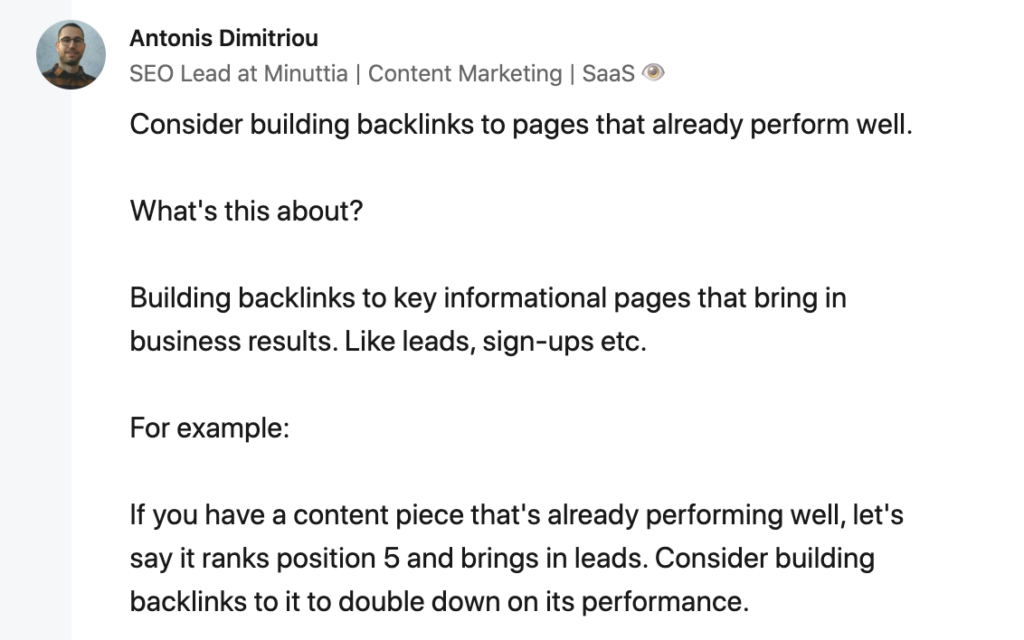
When choosing target pages, anchor texts, and placements, consider factors like your audience, search intent, and competition.
Understand these to craft a link-building plan that works.
❗ Important Note: The success of your project hinges on choosing the right keywords for your target pages. A common mistake among inexperienced SEOs is neglecting the search intent behind queries.
Step 3: Prepare your website for link building
Link building can give your SEO strategy that extra boost, but it only works if your website has a solid foundation. Think of it as building a house—you need a strong base first.
So, before you jump into link building, make sure your site is in top shape.
Start with a technical SEO audit:
- Look for and address issues that could hinder search engine crawling and indexing.
- Structure your URLs logically and improve website navigation if needed.
- Delete duplicate content.
- Optimize page load speed.
- Check for and fix broken links on your website.
- Add schema markup.
💡 Tip: Use Ahrefs to run a site audit and identify site health issues quickly.
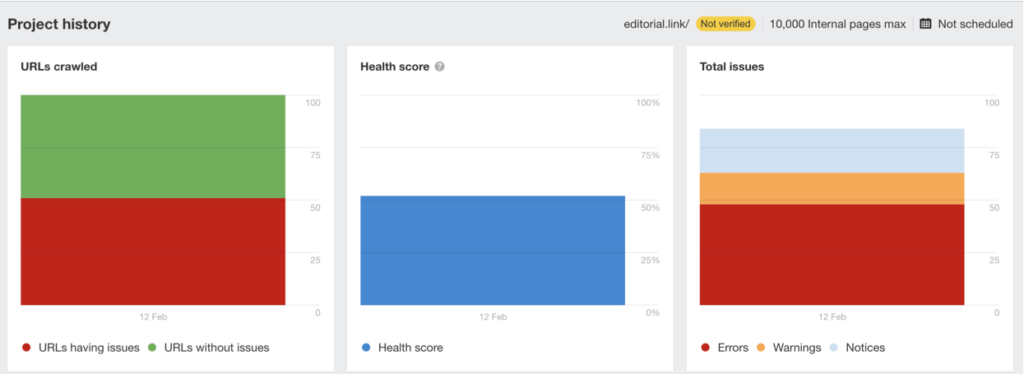
Once done, move on to a content audit. Focus on the pages you plan to build links for:
- Optimize your content with relevant keywords.
- Create informational content clusters to support your commercial pages if you haven’t done so yet.
- Link content internally.
💡 Tip: Conduct a keyword gap analysis to find keywords your competitors rank for that you don’t. This will uncover missed opportunities. You can then incorporate these keywords into your existing content or create new pages around these topics.
Remember, a well-prepared site is more attractive to search engines and link partners, so don’t skip this critical step.
Step 4: Run competitor analysis
To get a leg up on the competition, you need to dive deep into your competitors’ backlink profiles. This is where your trusty SEO tool comes into play. By analyzing your competitors, you can uncover valuable linking opportunities that could benefit your strategy.
Identify your search competition
Enter your target keywords into your SEO tool to see which sites are ranking for similar terms. This will give you a good idea of who your real competitors are in the search landscape.
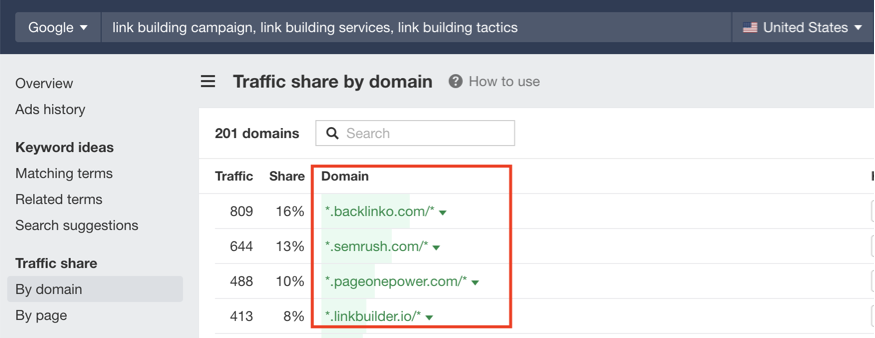
For example, if you’re working with a startup developing a new CRM system, concentrate on other startups within that niche rather than trying to emulate the strategies of established players.
Industry giants have had years to build their reputations, and what works for them may not work for a newer company.
You can also use competitor reports to estimate the traffic potential for your niche.
Analyze competitors' backlink profiles
Once you’ve identified your competitors, dig into their link profiles.
Filter their inbound backlinks by authority and traffic to find the most valuable links.
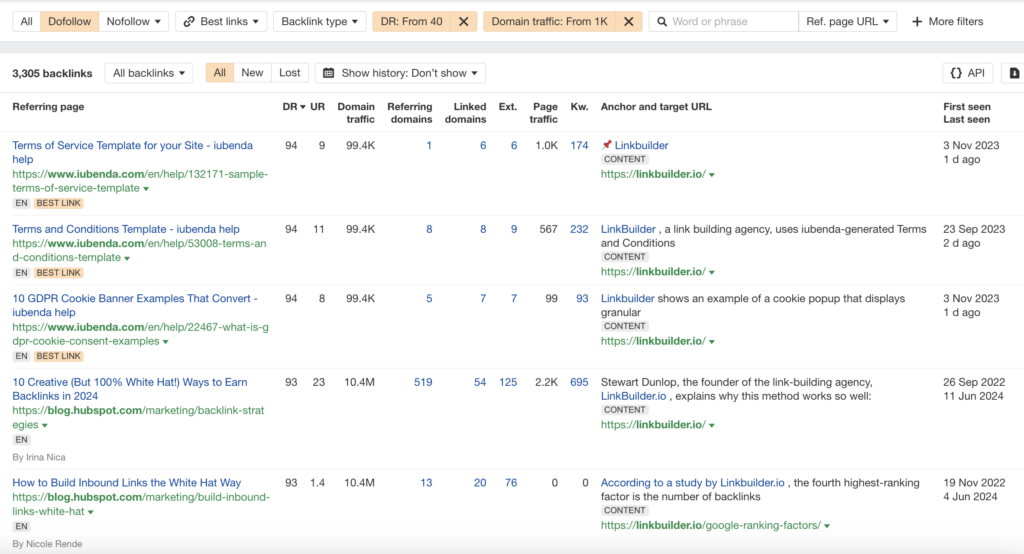
Look for the types of content that attract backlinks for your competitors and try to determine the nature of those links.
While many of these links will be difficult to replicate, you can identify some low-hanging fruit such as directory links, listicles, interviews, and guest posts that might be easier to obtain
Determine how many links you need
By analyzing your competitors’ link profiles, you can find out how many links you’ll need to outperform them. Here’s a simple approach:
- Look at the total number of referring domains in your competitors' profiles.
- Apply a filter to only see quality placements — say, with a Domain Rating (DR) or Domain Authority (DA) of 40 and above.
- Now that you’ve narrowed down the list to around 10% of the initial number, consider it your target for link-building.
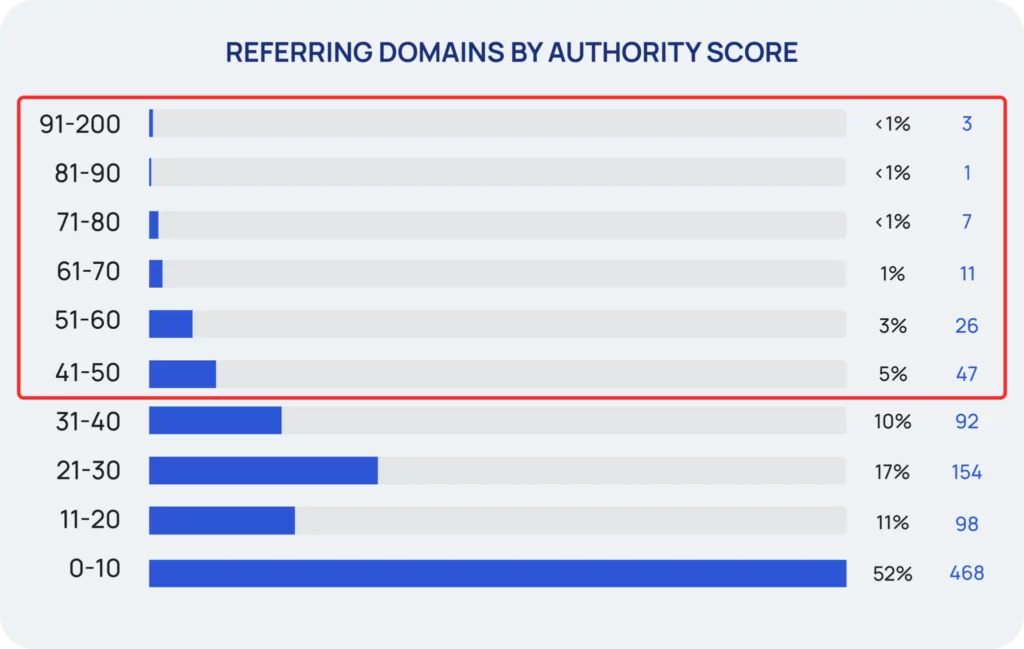
Step 5: Set your budget
After determining the number of links you need and choosing your strategies, you'll have an idea of the budget required to execute your plan.
In a low-competition niche, you can expect to spend around $750+ per month if you decide to outsource your link-building to a reliable freelancer.
Now, we stress the word “reliable” here because you might find freelancers on platforms like Fiverr offering hundreds of links for just $50. Sounds tempting, right? But here’s the catch: those links are often low-quality and not worth your time.
You’ll want links that actually work for your SEO, not ones that drag you down and cause headaches.
If you're considering hiring an in-house specialist, don't forget to factor in overhead costs. When you're just starting, outsourcing is often quicker and more cost-effective.
Want to save money without losing quality?
Outsource your link building to an experienced agency.
With 11–14 years of link-building experience, our team has built strong connections that help you get results faster.
Contact us for a free sample of high-authority links. No pre-payments and no BS.
Step 6: Choose your link-building techniques
With your target pages and link numbers in mind, it's time to select off-page techniques that match your goals.
According to Mickey Aharony:
A mix of different tactics tailored to your goals and resources can be more beneficial than relying on a single strategy. I recommend considering these in the first place:
- Create quality content. Focus on submitting high-quality, relevant content to top-tier websites. Utilize strategic branding and non-branded keywords for backlinks to your site’s blog or landing page.
- Try PR. Engage in PR activities by contributing bylines and interviews to industry-centric publications. This not only aids in link-building but also bolsters your credibility.
- Collaborate. Partner with other businesses and contribute valuable content to their platforms. In-context backlinks from these collaborations are highly beneficial for SEO.
- Utilize LinkedIn Pulse. Publish content on LinkedIn Pulse to take advantage of its tendency to rank well on Google, providing another avenue for creating backlinks.
Here are some techniques the expert suggests to consider:
Try digital PR link building
Write guest pieces and give interviews for industry sites. It helps you earn links, build trust, and improves your chances of being cited in AI search results.
Collaborate
Work with other businesses and share useful content on their platforms. The backlinks you get from these partnerships can give your SEO a solid boost.
Then there are also other white-hat link-building techniques to pay attention to.
Guest Blogging
Guest blogging is a very resource-intensive link-building strategy, but it’s the easiest to scale (among white hat methods).
You can use it to build links to informational content on your site and your partners’ sites.
For instance, if you add 5–7 partner links in a guest post, you'll get 5–7 reciprocal links per post, plus one or two links pointing to your own site from the guest post.
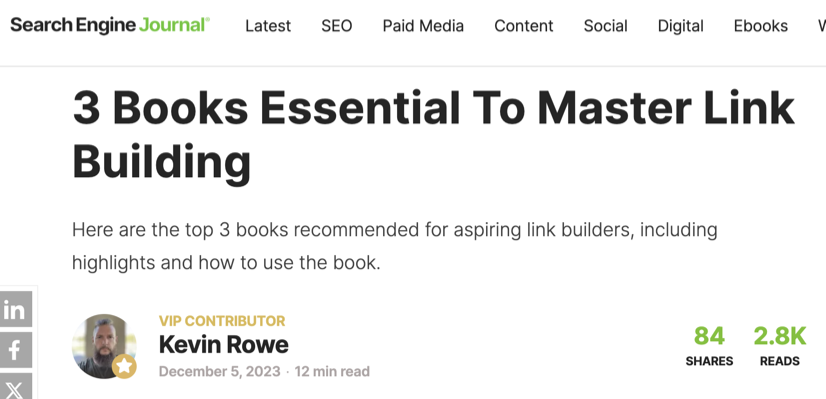
Start HARO link building
Pitch expert quotes to journalists and media outlets. This can earn you backlinks from major sites and improve your chances of being mentioned in AI search results.
It’s a great place to build links for your homepage.
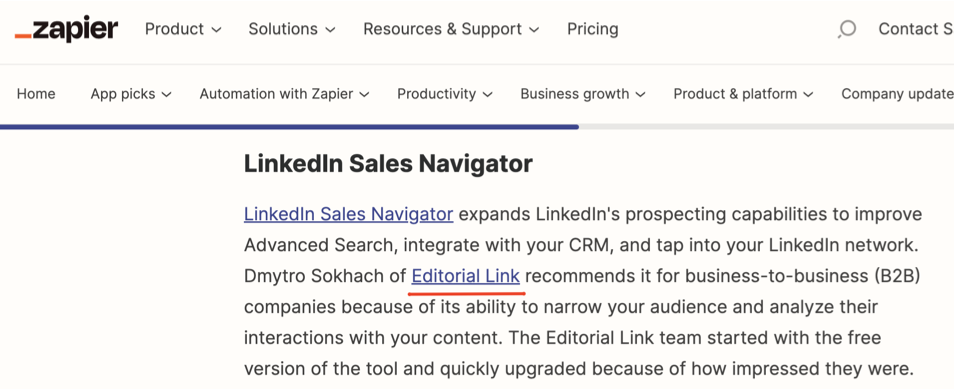
Editorial Links
Editorial links are the most powerful type of backlinks. They point out to your website (most likely, informational pages) from a blog of a trusted site. You can acquire them naturally or… try niche edits.
Niche edits are links built from existing content rather than newly published content. To make it work, you need link-worthy content and strong communication skills.
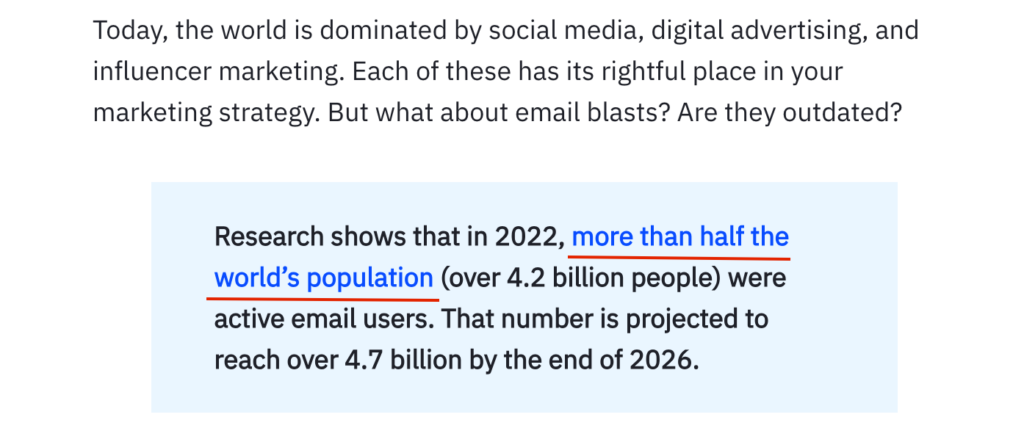
Editorial.Link can handle it for you. We’ve built thousands of editorial links from high-authority websites for our clients. Become our next success story.
Create Linkable Assets
No matter which link-building strategy you choose, you can amplify its impact by creating linkable assets.
Are you writing guest posts? There's a higher chance editors will keep your links if they point to high-quality, relevant content.
Are you building links through HARO? Promote your research or experiments if they're relevant to the journalist's request.
Creating linkable content makes everything easier.
Aim for original research, infographics, thought leadership content, and experiments—anything that others in your field will find insightful enough to link to it.
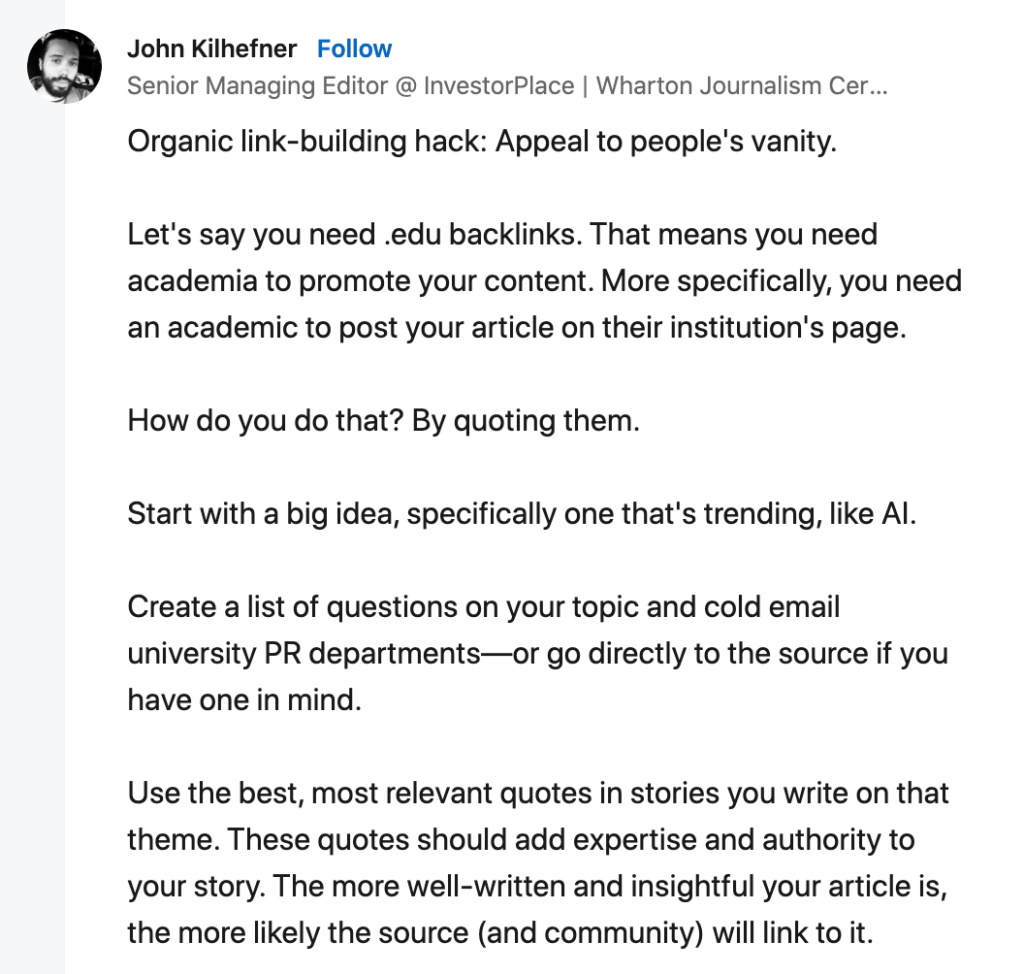
Let’s Prepare Your Link-Building Plan
It’s not the strategies or even budget that define the success of your link-building plan. The most important component of your plan is its alignment with your goals.
Do you want to grow traffic? Do you want more leads?
Do you want to increase your site’s authority?
Oftentimes, there may be completely different pathways to each of these objectives.
Define your goals first and talk to us then. Our experts will help you build links that get you closer to your objectives.





